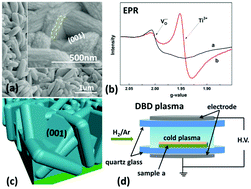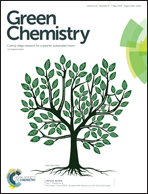A green synthetic approach for self-doped TiO2 with exposed highly reactive facets showing efficient CO2 photoreduction under simulated solar light†
Abstract
Doping with oxygen vacancies and Ti3+ and engineering of the crystal morphology for exposing highly reactive facets have been demonstrated as important approaches to decrease the band gap of TiO2 and establish surface heterojunctions to enhance the photocatalytic performance of TiO2 under simulated solar light. The highly reactive facets can impact not only the CO2 reduction but also the TiO2 modification. Herein, atmospheric pressure dielectric barrier discharge (DBD) cold plasma, a green method with no environmentally hazardous reducing agents, was developed to achieve the self-doping of a TiO2 single crystal film with exposed highly reactive facets. This method combines the advantages of the special facets and crystal defects. The characterization results indicate that the DBD cold plasma method achieves the modification of the TiO2 film. The samples show remarkable improvement in reducing CO2 and H2O to CO and CH4 under simulated solar light, with yields reaching 0.075 micromol per m2 and 0.015 micromol per m2, respectively. The formation mechanisms of the method for TiO2 modification and CO2 reduction are also discussed.



 Please wait while we load your content...
Please wait while we load your content...